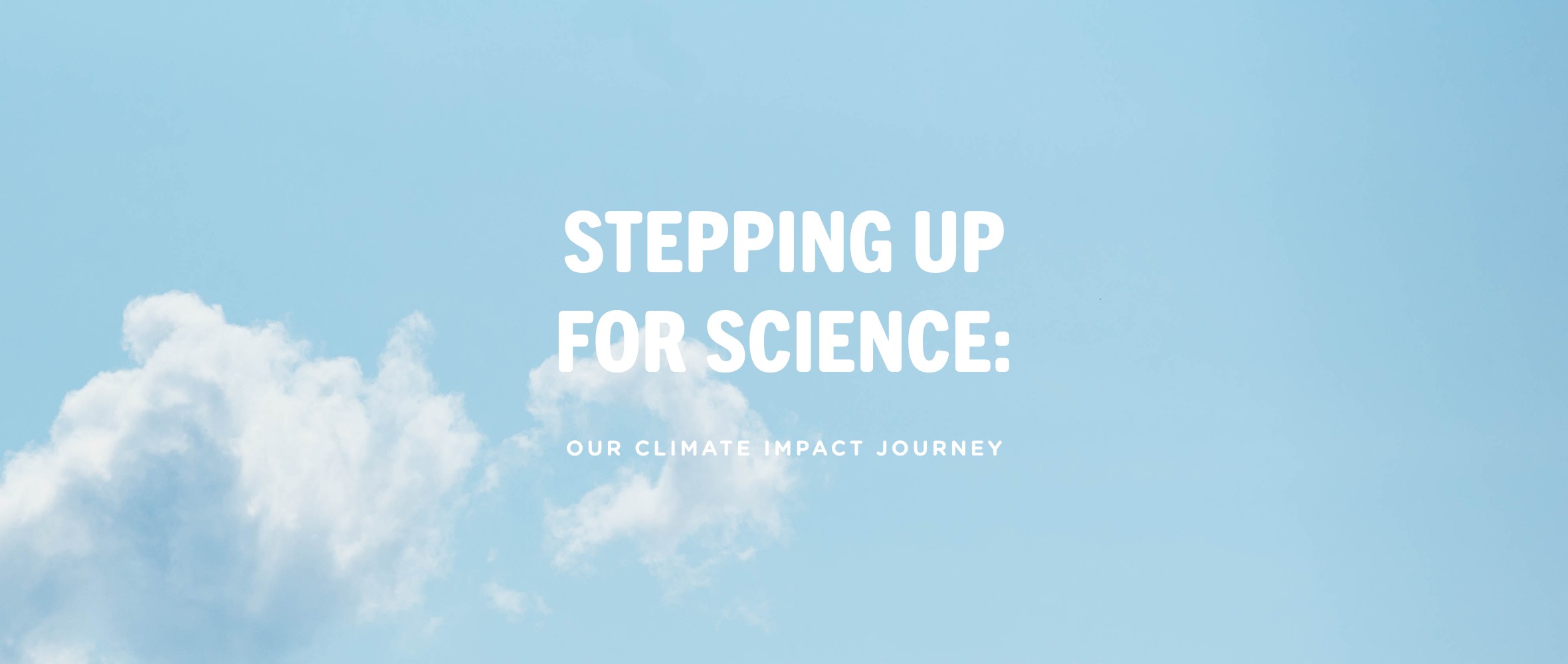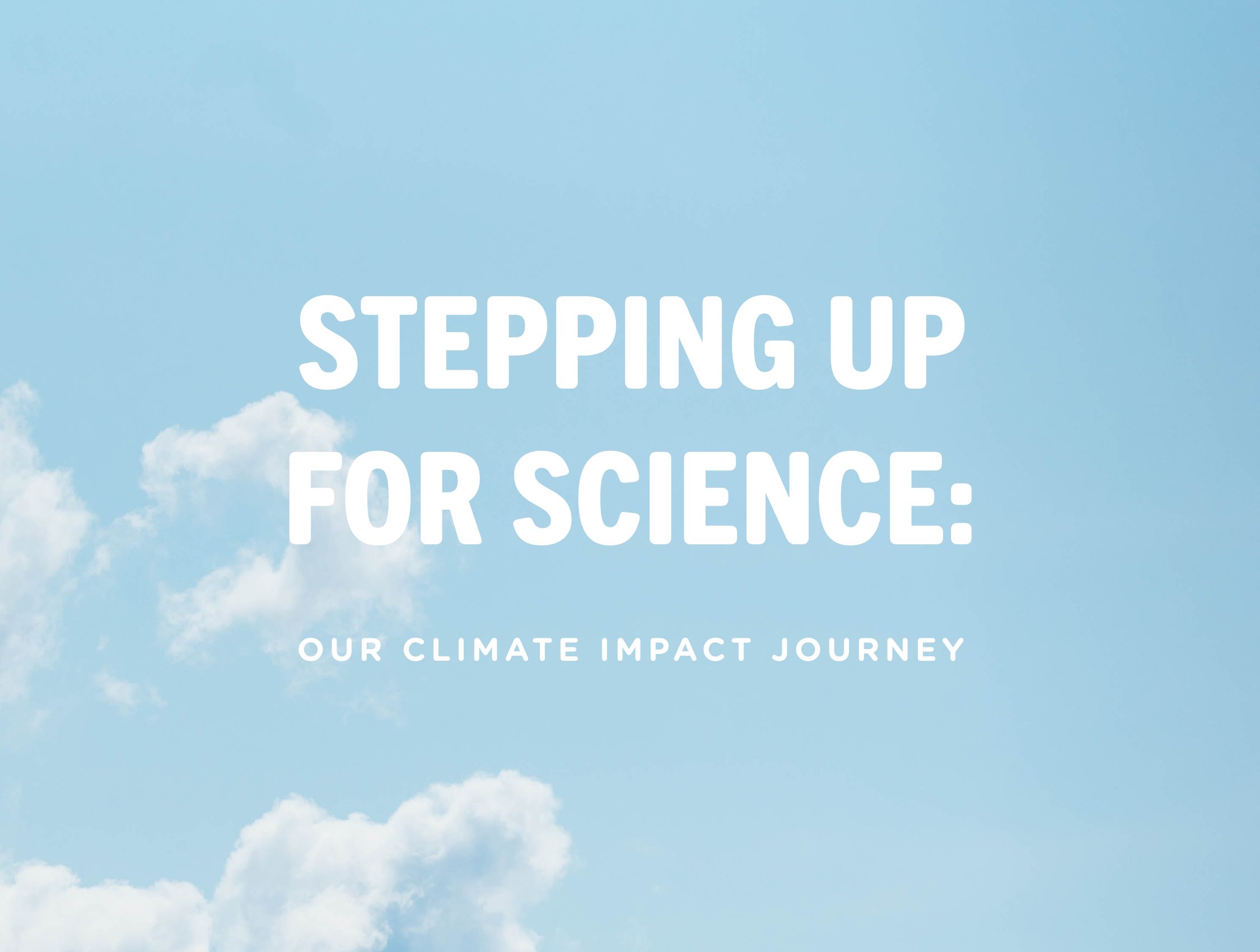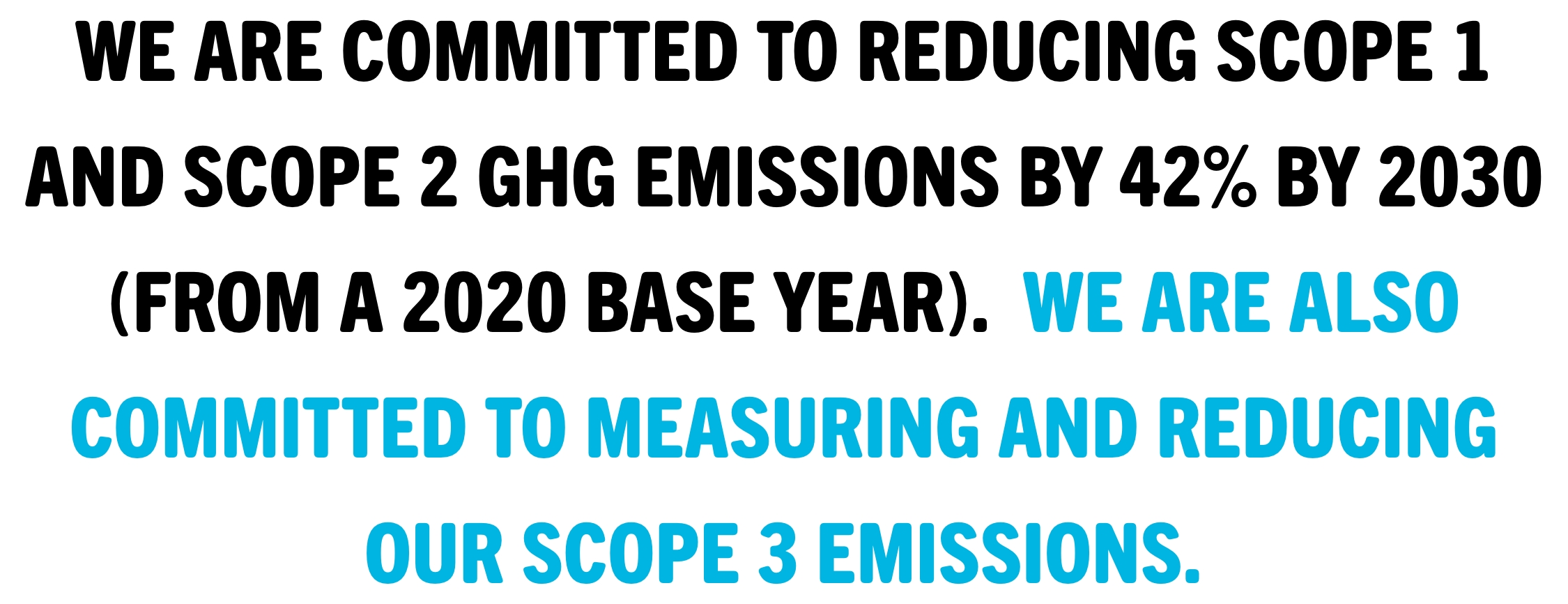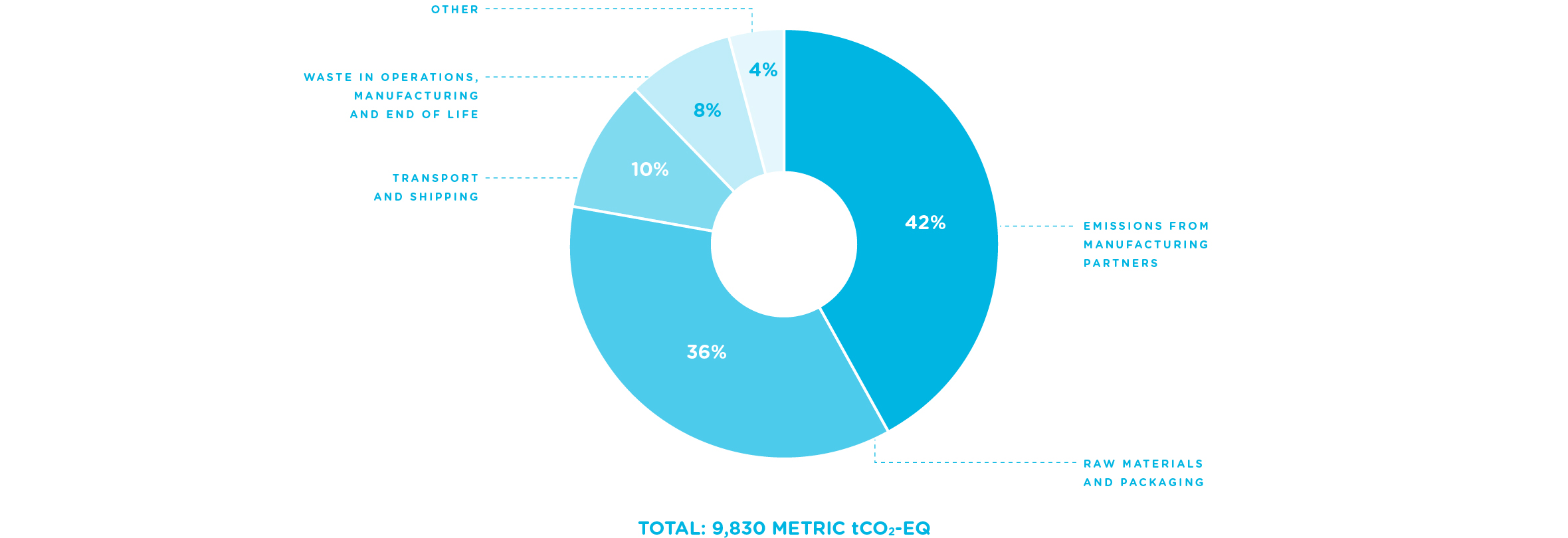We’re taking action to secure a positive future for people and planet. The world we love is at a critical tipping point, and we believe it’s important for businesses big and small to step up and do their part for Mother Earth. Over the past two years, we have been working with a group of third-party experts to understand our climate footprint, and how we can live more lightly on the planet.
We’re taking action to secure a positive future for people and planet. The world we love is at a critical tipping point, and we believe it’s important for businesses big and small to step up and do their part for Mother Earth. Over the past two years, we have been working with a group of third-party experts to understand our climate footprint, and how we can live more lightly on the planet.
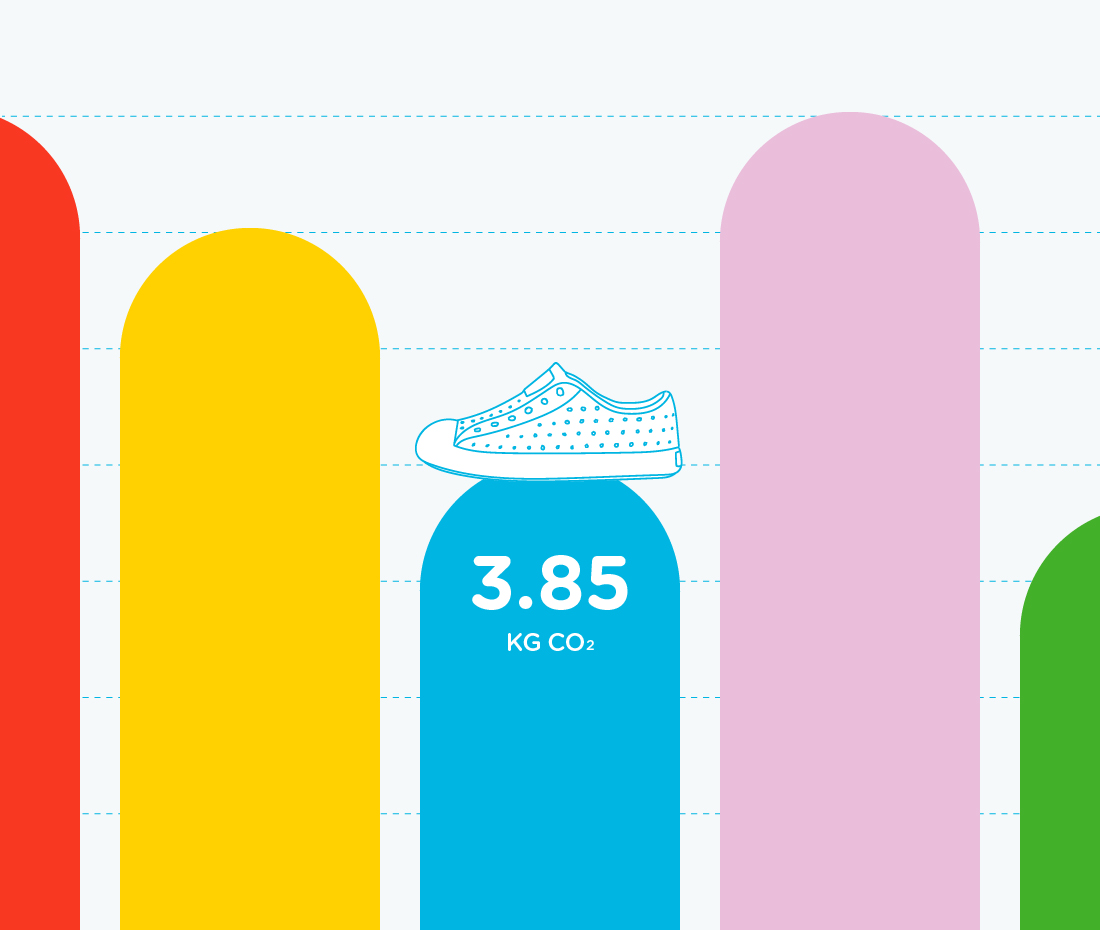
We’re proud to share that our iconic Jefferson is already one of the lowest-impact shoes on the market, clocking in at just 3.85kg CO2e per pair. Every time you buy a pair of Native Shoes, you’re saying no to higher impact options, with footprints of 10, 15 or even 20kg CO2e. It’s a choice you can feel good about (and look good in).
Our Commitment:
Our Commitment:
So, what does this mean?
Scope 1 emissions are direct emissions that come from owned or controlled sources. And ours happens to be zero. That’s because our operations are owned by third party logistics providers—meaning our total carbon footprint is driven by Scope 2 and 3.
Scope 2 emissions include emissions generated directly (think: boilers on-site, purchased electricity used for our lighting, computers, and coffee machines at our HQ and retail stores). We’re lucky to be based in Vancouver, where our electricity comes from renewable sources, meaning that the emissions within our direct control account for a small percentage of our overall footprint—just 0.2%. That said, we are still planning to lower this further, including switching all our electricity to renewable sources.
Native Shoes has less than 500 employees and is not owned by a parent company making it a Small and Medium Sized Enterprise (SME) according to the Science-Based Targets Initiative (SBTi). SMEs like us are not required to set a target for Scope 3 emissions (the result of the activities from sources not owned or controlled by us) but must commit to “measure and reduce” Scope 3 emissions through SBTi. But we want to go above and beyond SBTi requirements and set a voluntary Scope 3 target.
The bigger impact comes from how we work to address our Scope 3 emissions‚ the other 99.8% coming from indirect emissions that occur as a result of several areas such as energy consumption, materials and our operations from our manufacturing partners (which we do not own or control). Our Scope 3 emissions may not be directly determined by us, but we must play a part in influencing and lowering its overall impact.
We’ve even implemented a carbon emission accounting software platform, BMO Radicle, which allows us to monitor, measure, reduce, and report our yearly carbon impact. Plus, we’ve worked with a third party to understand our greenhouse gas (GHG) inventory which allowed us to submit our reduction plan and targets to the SBTI.
So, what does this mean?
Scope 1 emissions are direct emissions that come from owned or controlled sources. And ours happens to be zero. That’s because our operations are owned by third party logistics providers—meaning our total carbon footprint is driven by Scope 2 and 3.
Scope 2 emissions include emissions generated directly (think: boilers on-site, purchased electricity used for our lighting, computers, and coffee machines at our HQ and retail stores). We’re lucky to be based in Vancouver, where our electricity comes from renewable sources, meaning that the emissions within our direct control account for a small percentage of our overall footprint—just 0.2%. That said, we are still planning to lower this further, including switching all our electricity to renewable sources.
Native Shoes has less than 500 employees and is not owned by a parent company making it a Small and Medium Sized Enterprise (SME) according to the Science-Based Targets Initiative (SBTi). SMEs like us are not required to set a target for Scope 3 emissions (the result of the activities from sources not owned or controlled by us) but must commit to “measure and reduce” Scope 3 emissions through SBTi. But we want to go above and beyond SBTi requirements and set a voluntary Scope 3 target.
The bigger impact comes from how we work to address our Scope 3 emissions‚ the other 99.8% coming from indirect emissions that occur as a result of several areas such as energy consumption, materials and our operations from our manufacturing partners (which we do not own or control). Our Scope 3 emissions may not be directly determined by us, but we must play a part in influencing and lowering its overall impact.
We’ve even implemented a carbon emission accounting software platform, BMO Radicle, which allows us to monitor, measure, reduce, and report our yearly carbon impact. Plus, we’ve worked with a third party to understand our greenhouse gas (GHG) inventory which allowed us to submit our reduction plan and targets to the SBTI.
Within Scope 3, we have a few focus areas:
Energy consumption in the manufacturing process of our product makes up 42% of our footprint. Reducing this will mean working in alliance with other brands and our factory partners to increase energy efficiency and shift toward using renewable sources for production.
Raw materials and packaging make up 36% of our footprint. We are conscious of selecting materials that are less impactful in our product innovations. It’s why we’ve added Sugarlite™ in our core styles and consciously choosing bio-based components in our new styles where possible.
How can you help?
Giving your Native Shoes a second life is a simple way to reduce the impact of our footprint per customer. We encourage you to donate, gift or resell your pre-loved shoes if they are in good condition. If they have been loved too much, The Native Shoes Remix™ Project is our flagship recycling initiative, where we break down and repurpose the lightweight materials to make the bouncy floor of playgrounds, insulation, and more. Since 2018, recycled shoes have been used to build six playgrounds around Vancouver.
To recycle your shoes, reach out to our Customer Service team and we’ll send you a box to ship them to us.
Within Scope 3, we have a few focus areas:
Energy consumption in the manufacturing process of our product makes up 42% of our footprint. Reducing this will mean working in alliance with other brands and our factory partners to increase energy efficiency and shift toward using renewable sources for production.
Raw materials and packaging make up 36% of our footprint. We are conscious of selecting materials that are less impactful in our product innovations. It’s why we’ve added Sugarlite™ in our core styles and consciously choosing bio-based components in our new styles where possible.
How can you help?
Giving your Native Shoes a second life is a simple way to reduce the impact of our footprint per customer. We encourage you to donate, gift or resell your pre-loved shoes if they are in good condition. If they have been loved too much, The Native Shoes Remix™ Project is our flagship recycling initiative, where we break down and repurpose the lightweight materials to make the bouncy floor of playgrounds, insulation, and more. Since 2018, recycled shoes have been used to build six playgrounds around Vancouver.
To recycle your shoes, reach out to our Customer Service team and we’ll send you a box to ship them to us.
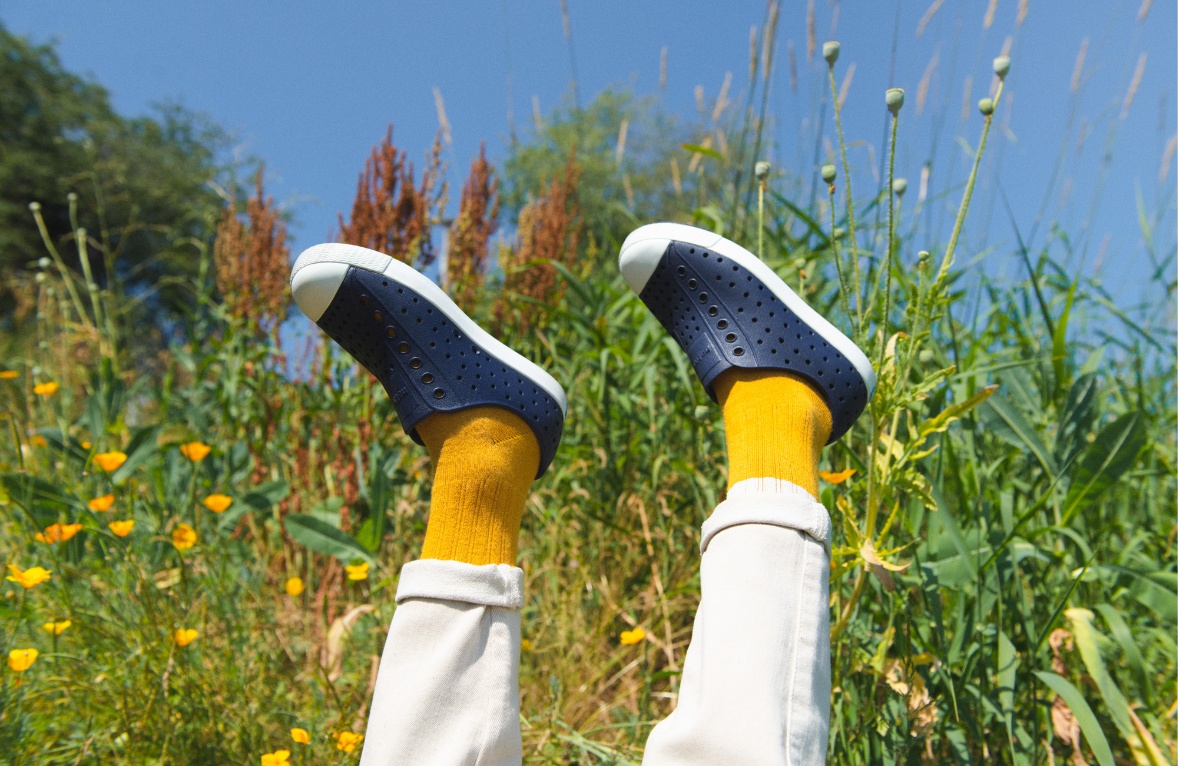
Of course – our carbon footprint is just one aspect of our impact as a brand. Creating a better world also means working to build connections, spread kindness, and create positive social change in our communities. Setting our climate targets marks a small step forwardand one part of our bigger plans and goals moving forward.
There’s a lot to be done and we can’t do it all on our own. We’re excited to step up for science and take this journey with you—sharing progress, learnings, and updates on our path to live lightly.
There’s a lot to be done and we can’t do it all on our own. We’re excited to step up for science and take this journey with you—sharing progress, learnings, and updates on our path to live lightly.
